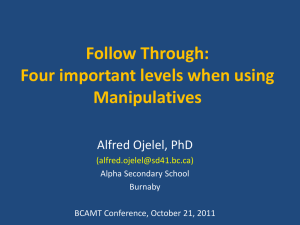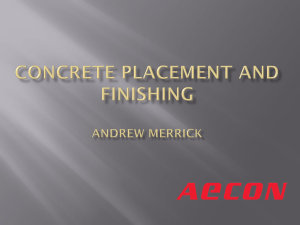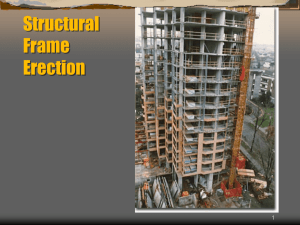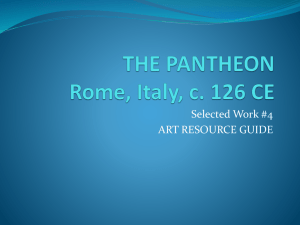Teaching by Providing Concreteness, Activity, and Familiarity
advertisement
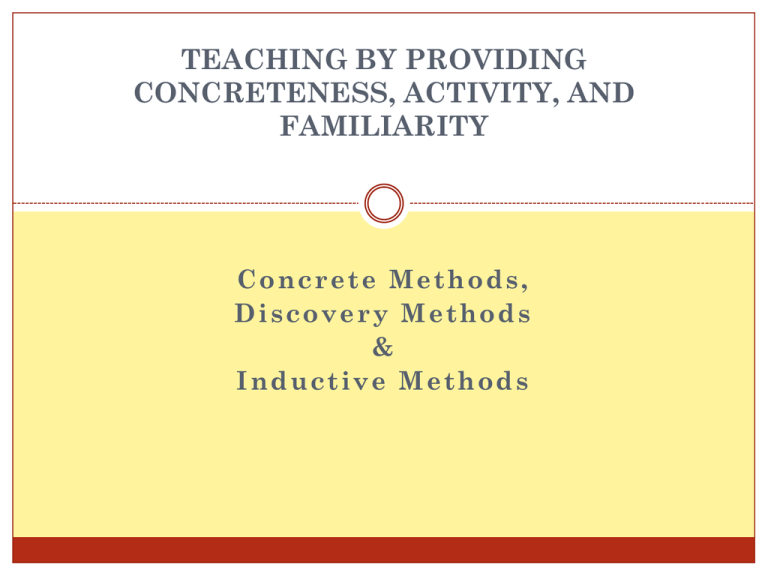
TEACHING BY PROVIDING CONCRETENESS, ACTIVITY, AND FAMILIARITY Concrete Methods, Discovery Methods & Inductive Methods TEACHING BY PROVIDING CONCRETENESS, ACTIVITY, AND FAMILIARITY Desire to Learn (D2L) – Practice Discussion Chapter 8 Group Presentation Chapter 8 PP Next week (Oct. 18-22): You must post your current issue PowerPoint by Monday, Oct. 18th, run your discussion through Thursday, Oct. 21st and summarize the discussion on Friday, Oct. 22nd. You must post on at least 3 other discussions but feel free to post more than 3 if you are interested. 3 Techniques to provide meaningful instruction Concrete Materials – make the learning task more concrete Discovery Activities – make the learner more active in the learning task Inductive Sequencing –make the learning task more familiar by having the learner use prior knowledge Concrete Methods Concrete methods Goal: Making ideas more concrete in a learner’s mind by relating the problem (abstract concept) to concrete objects Concrete Manipulatives Physical objects students move and rearrange that facilitate understanding of the concept being taught Concrete Materials Common in Teaching Math and Science Examples in Math: Base 10 blocks (called Dienes Blocks in book) Tangrams Geoboards Play money Montessori Materials – example from book Using beads to represent 1s, 10s and 100s Progress to expanded notation using colored labels Progress to standard notation using superimposed labels Standard notation Bruner’s Theory of Cognitive Development (1964) Three modes of representing information used in learning a new skill Enactive mode – using actions Iconic mode – using visualization Symbolic mode – using language or other symbols 3 phase course of conceptual development Concrete Manipulatives in Mathematics --Bundles of sticks in math (Brownell,1935;Brownell and Moser,1945) The use of manipulatives in teaching was first systematically tested in the 1930’s Brownell and Moser (1949) Two 3rd grade groups were taught to solve two-digit subtraction problems One group by the standard method and the other using concrete manipulatives Found: Both groups could solve problems like those used during instruction The advantage of meaningful learning comes when the child is asked to transfer that knowledge to a new situation. Concrete manipulatives group performed better in learning to solve different problems Controversy Found in Recent Research Use of Concrete Materials alone does not guarantee successful acquisition of concepts Factors of influence Wrong type of material- manipulatives that hinder learning of abstract concepts Structure of learning environment that doesn’t support learning from concrete materials Failing to connect the concrete materials to the abstract representations Take Home Message Material Select material that is simple representations of concepts to be taught. Structured learning environment Do not allow students to “play” or “free explore” concrete materials prior to instruction of how to use them in relation to the concept being taught. Make explicit how concrete material are physical representations of the symbolic system Discovery Methods STUDENTS AS EXPLORERS Discovery Methods Goal: students become active in the learning process as they work to discover the rules for solving the problem without being instructed Three kinds of discovery methods Pure discovery- student independently discover method for solving problem with minimal teacher guidance. Guided discovery- student discover method for solving problem with teacher guidance (hints and/or directions) Expository- student are explicitly told how to solve the problem Do Discovery Methods lead to Learning? Immediate Retention Long-term Retention Guided discovery better than both pure discovery and expository Lowest for pure discovery- suggesting learning wasn’t meaningful Teaching for transfer: Ability of the student to transfer information from what they have learned to a new situation Equal for guided discovery and expository Lowest for pure discovery- suggesting less learning occurs Guided discovery better than both pure discovery and expository Lowest for pure discovery- Implications Extra processing required by students under direction found in guided discovery method leads student to retain more information and transfer that information to novel learning situations. Inductive methods Inductive Methods Goal: making the learning task more familiar by having the learner use prior knowledge Inductive Reasoning: ability to abstract a general rule or principle based upon a specific example or instantiation. Inductive methods Inductive Method- the rule is given only after the learner has induced the underlying framework for the rule. Example: Area = Base x Height Rather than giving the formula allow students to attempt various methods for solve problems first then introduce the rule later. Findings: Improves long-term retention and increases transfer “GIVE A MAN A FISH; FEED HIM FOR A DAY. TEACH A MAN TO FISH; FEED HIM FOR A LIFETIME.” A CHINESE PROVERB BY LAO TZU

